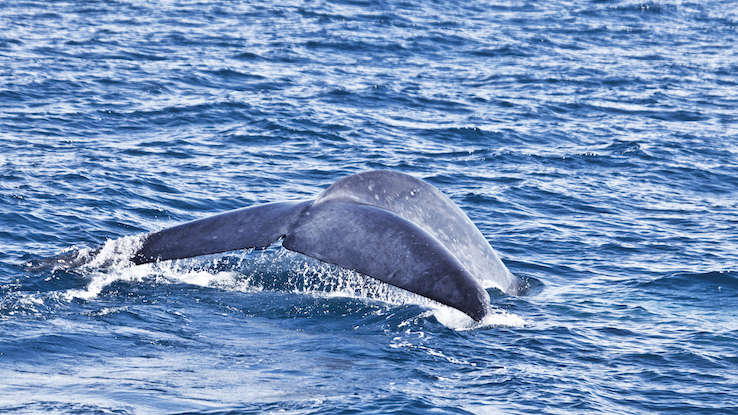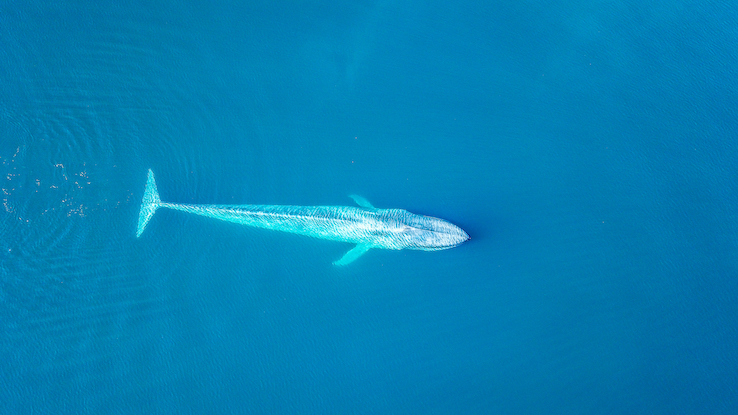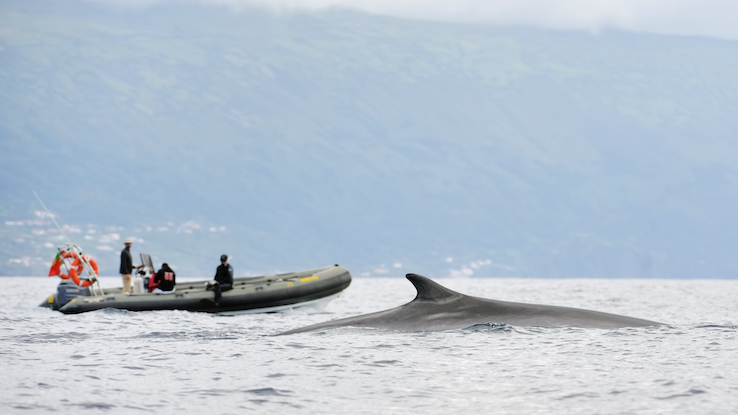How Big Is the Blue Whale?

Blue whales are the largest creature known to humankind, and they continue to make a big splash in the field of marine biology. These breathtaking animals mystify ocean lovers with their gravity-defying bodies, powerful vocal calls and other unique traits. Sadly, their species is under threat due to pollution, climate change and other human factors.
Just what makes blue whales so special? And how can we help to protect these gentle giants of the sea? Find out the answers to these and other questions below.
Incredible Facts About Blue Whales

Blue whales are a fascinating presence in our oceans. These giants are the largest animals on Earth, often measuring upwards of a stunning 30 meters long. They can also weigh nearly 150 tons. For reference, this is equal to approximately three school buses in length and over 15 school buses in weight. The inner workings of a blue whale are just as massive. Some of their organs weigh more than cars, including their hearts.
Despite their massive size, blue whales are remarkably gentle presences in the sea compared to other whale species. Rather than hunting for seals or turtles like toothed whales, blue whales’ main source of food is krill. These itty-bitty creatures sustain blue whales, who eat millions of them daily. They use bristles in their mouth to capture their krill.
In addition to being the largest earth animal, blue whales are also the noisiest. Like most whale species, blue whales speak to each other through a series of undersea calls. Their cries are the loudest of any known species, with calls that surpass 188 decibels — approximately 100 decibels louder than the human voice and 60 more than a jet engine. Their enormous voices carry thousands of miles across the ocean. The sound is dampened before it passes above the water, so humans don’t typically hear their cries.
These are only a few of the unique properties of blue whales. Unfortunately, though hundreds of thousands of these creatures once occupied our oceans, blue whales are currently considered endangered. What led their population to dwindle?
What Threats Do Blue Whales Face?

Throughout history, blue whales have faced unique threats to their populations due to human behavior. In the early 1900s, humans hunted blue whales in order to sell the oil extracted from their blubber. This had a severe impact on their natural populations. They nearly went extinct during this period, eventually receiving protection under the Endangered Species Act and Marine Mammal Protection Act. These make it illegal to hunt blue whales in the wild. Their populations have recovered some, but only a percentage of their original population has been restored. It’s estimated that hundreds of thousands of blue whales died during the 20th century.
The 1900s were not the only dangerous time for blue whales. Currently, climate change and pollution are having a substantial impact on ocean water quality and blue whales’ food sources. Chemical pollution from boats and factories that dump harsh products into the ocean has the potential to poison blue whales and their food, resulting in sickness and death. The melting of the polar ice is likely to impact blue whales over time. Their food source, krill, eats algae that are reliant on polar ice. Without intervention, blue whales could see a drastic decrease in their prey, which may lead to starvation in some populations.
Present-day fishing habits have also had a dangerous impact on these giant creatures. The hearty size of blue whales makes it difficult for them to steer clear of fishing equipment under seas. They are more prone to becoming caught or tangled in large fishing nets or chains. These can constrict their ability to move, breathe and eat. Blue whales may also collide with commercial boats and get injured or killed in these crashes.
How Can We Help Protect Blue Whales?

Fortunately, various organizations are working to research, protect and restore the populations of these giant whales. One such organization is Save the Whales.
Based in Seaside, CA, the goal of Save the Whales is “to preserve and protect the ocean and its inhabitants.” Their Make A Difference page includes multiple channels through which to get involved with conservation. This includes a list of how to be a marine activist in your everyday life, documentaries and films to watch and share, flyers and information to distribute, and more. They also highlight the work of fundraisers across the country and feature the work of schoolchildren who created conservation-based artwork or writing. They accept donations to educate the next generation on the importance of whale and ocean conservation.
Another great organization focused on whale conservation is the American Cetacean Society. They aim to “protect whales, dolphins, porpoises, and their habitats through public education, research grants, and conservation actions.” They provide opportunities to volunteer, including attending protests or rallies, sponsoring benefits for the ACS and more. You can also donate to support their research or pay dues as a member, which gives you access to members-only benefits. These include whale-watching discounts and access to exclusive ACS publications.
You can also “adopt” blue whales through a number of animal conservation organizations. When you adopt a whale, you pledge money towards charities that are working to protect them and other endangered creatures. These organizations will typically send you a stuffed animal, a certificate or other goodies as a reward for your generosity.
Ultimately, while blue whales are under threat, there are many organizations working to keep these graceful creatures alive. Your support can help ensure these whales remain in our oceans for decades to come.





